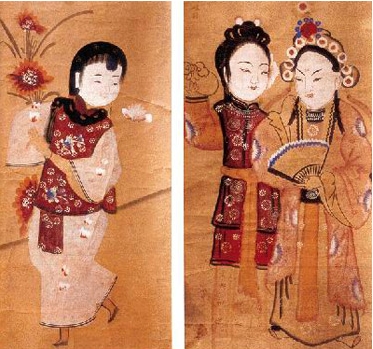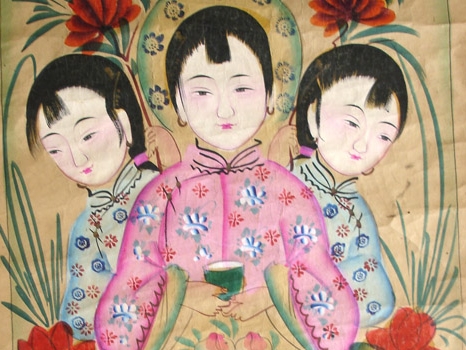
Ash-dusting New Year print, as one kind of folk new year prints in China, came out in the Chenghua Period (1467-1487) during the Ming Dynasty and became popular in the Qing Dynasty. According to the existing material, it is only in Gaomi area that this kind of new year print exists, and it mainly goes around the 30 villages such as Jiangzhuang Village and Xiazhuang Village in the north part of Gaomi area. Ash dusting means that the makers firstly burn the sallow to ash, and then draw lines with the ash to make the back plates, and they copy couples of sheets one time. Then the makers powder the face and hands on the printed picture, and then they apply color, decorate with liquid gold, and draw the lines, and in the end they coat oil on the key parts. The ash new year print is finally finished.

At first the folk painters copied from the wall paintings in temples to sell, because the copy needed a lot of manuscripts, so on the basis of the traditional folk rubbing method of manuscript of wall painting, the "ash dusting" rubbing method was developed. The biggest difference between "ash dusting" and "powder dusting" lies not in the use of material, but in the fact that "powder dusting" method uses the ready-made Fenben (powder plate, i.e., sample) while the "ash dusting" method needs to copy from the original work first. "Powder dusting" means direct printing, it uses the ash one time to print one time; "ash dusting" means copying one time to use for several times. Owing to this procedure, ash-dusting New Year prints did a good hand at absorbing all kinds of painting factors and molding styles so as to satisfy the people's aesthetic taste.





